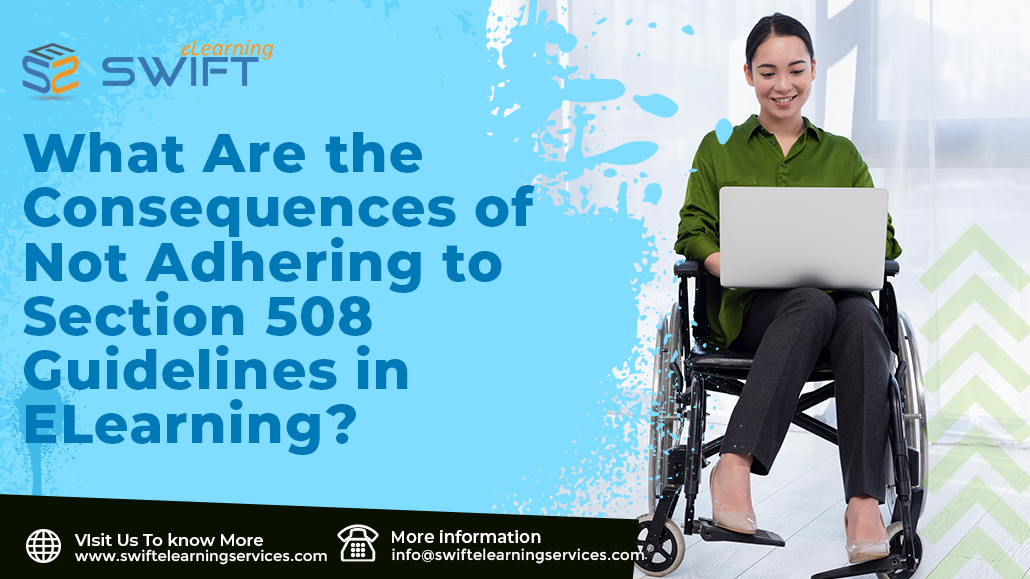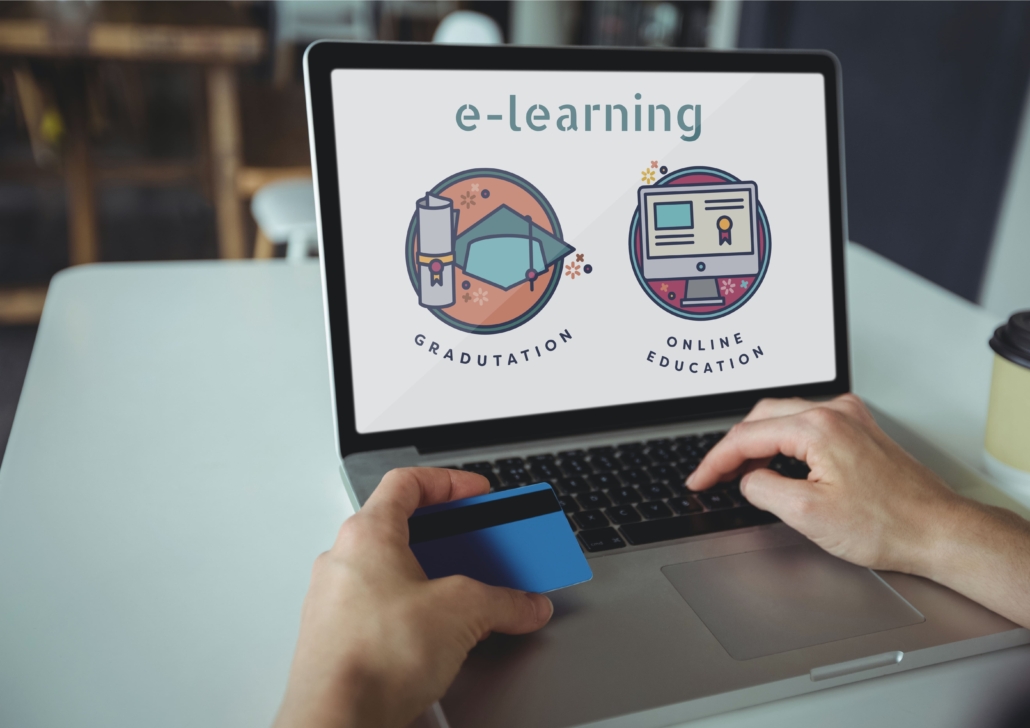What Are the Consequences of Not Adhering to Section 508 Guidelines in ELearning?
In the dynamic landscape of digital education, eLearning has emerged as a transformative force, breaking down barriers to education and training. However, in the pursuit of innovation, it’s essential to ensure that inclusivity is not compromised. This is where Section 508 guidelines come into play.
In this article, we will delve into the significance of Section 508 guidelines in eLearning and explore the far-reaching consequences of not adhering to them.
1. Understanding Section 508 Guidelines
Section 508 of the Rehabilitation Act of 1973 is a US federal law that mandates that all electronic and information technology developed, procured, maintained, or used by the federal government be accessible to people with disabilities. This includes websites, software, and other digital content.
While originally focused on government entities, the impact of Section 508 has rippled beyond its intended scope, influencing accessibility standards across various industries, including eLearning.
The key principles of Section 508 guidelines revolve around providing equal access, avoiding discrimination, and ensuring that individuals with disabilities can perceive, understand, navigate, and interact with digital content. These guidelines cover a range of disabilities, including visual, auditory, cognitive, and motor impairments.
2. The Consequences of Non-Compliance
2.1 Legal Ramifications
Failing to adhere to Section 508 guidelines can result in legal consequences. While the initial target is government entities, private organizations are also increasingly being held accountable for accessibility shortcomings. Legal actions can lead to significant financial penalties and damage to an institution’s reputation.
2.2 Exclusion of Individuals
The foremost consequence of neglecting accessibility is the exclusion of individuals with disabilities from eLearning opportunities. This not only contradicts the fundamental principles of equal access but also limits the potential of these learners to contribute to society and the economy.
2.3 Reputational Damage
In today’s interconnected world, news travels fast. Instances of inaccessible eLearning content can spread across social media and online platforms, tarnishing an organization’s reputation. This negative publicity can deter potential learners, partners, and collaborators.
2.4 Missed Market Opportunities
The global market for accessible products and services is substantial. By ignoring Section 508 guidelines, eLearning providers may miss out on catering to a sizable audience of individuals with disabilities, as well as organizations seeking inclusive solutions for their workforce.
2.5 Diminished Learning Effectiveness
Inaccessible eLearning content can lead to reduced learning effectiveness for all learners, not just those with disabilities. Clear navigation, well-structured content, and alternative formats (such as transcripts and captions) enhance the learning experience for everyone.
2.6 Innovation Stagnation
Adhering to Section 508 guidelines often spurs innovation. Developers are challenged to create novel solutions that cater to diverse needs. Ignoring these guidelines might lead to a stagnant and uninspired eLearning environment.
2.7 Unequal Educational Opportunities
Education is a fundamental right, and digital learning platforms have the potential to make education more accessible than ever. Neglecting accessibility hinders this progress, creating a divide between those who can access eLearning and those who cannot.
2.8 Decreased Compliance
If your organization or institution receives federal funding, adherence to Section 508 is obligatory. Non-compliance jeopardizes eligibility for such funding and grants.
2.9 Limited Career Opportunities
Inaccessible eLearning can hinder skill development for individuals with disabilities, limiting their career opportunities. By not adhering to accessibility standards, eLearning providers indirectly contribute to the perpetuation of unemployment or underemployment among disabled individuals.
3. Best Practices for Section 508 Compliance in eLearning
3.1 Provide Alternative Text
Images and graphics should have descriptive alternative text (alt text) to convey their content to screen readers.
3.2 Caption and Transcribe Multimedia
Videos should be captioned, and audio content transcribed to ensure access for individuals with hearing impairments.
3.3 Logical Content Structure
Maintain a clear and logical structure for your eLearning content. Use appropriate headings, lists, and formatting to aid navigation and comprehension.
3.4 Color and Contrast Consideration
Ensure that text has sufficient contrast against its background and that color is not the sole means of conveying information.
3.5 Keyboard Accessibility
All functionalities of your eLearning platform should be accessible via keyboard navigation, ensuring that individuals with motor impairments can use the platform effectively.
3.6 Readable Fonts and Text Sizes
Choose readable fonts and allow users to adjust text sizes. Avoid small fonts that might be difficult for individuals with visual impairments to read.
3.7 Testing with Assistive Technologies
Regularly test your eLearning content with various assistive technologies, such as screen readers, to identify and address accessibility issues.
3.8 Consistent Navigation
Maintain consistency in navigation menus and buttons throughout your eLearning platform. Predictable navigation aids users in finding and accessing content seamlessly.
3.9 Provide Descriptive Links
Use descriptive link text instead of vague phrases like “click here” to provide context to screen reader users.
4. Conclusion
In the realm of eLearning, inclusivity should be a guiding principle. Section 508 guidelines serve as a blueprint for creating accessible and equitable eLearning experiences for all individuals, regardless of their disabilities.
The consequences of not adhering to these guidelines extend beyond legal ramifications to encompass societal, reputational, and educational dimensions. By embracing accessibility, eLearning providers can unlock the full potential of their platforms, fostering an environment of learning without barriers.
It is imperative that we recognize the importance of Section 508 compliance and work towards a future where eLearning truly empowers everyone.
Frequently Asked Questions (FAQs)
What are Section 508 guidelines?
Section 508 guidelines stem from the US Rehabilitation Act of 1973, requiring federal electronic and information technology to be accessible to individuals with disabilities. These guidelines extend beyond government entities, influencing various industries, including eLearning.
Why is Section 508 compliance important in eLearning?
Section 508 compliance ensures that eLearning content is accessible to individuals with disabilities, promoting equal educational opportunities. Neglecting compliance can lead to legal consequences, exclusion of learners, and reputational damage.
What are the consequences of not adhering to Section 508 guidelines?
Non-compliance with Section 508 guidelines can result in legal actions, exclusion of disabled individuals, reputational damage, missed market opportunities, diminished learning effectiveness, and more. It also inhibits innovation and equal access to education.
How does non-compliance affect learners with disabilities?
Inaccessible eLearning content limits access for individuals with disabilities, impeding their learning and career opportunities. It perpetuates inequality and restricts their ability to acquire essential skills.
What are some best practices for Section 508 compliance in eLearning?
To ensure Section 508 compliance, provide alternative text for images, caption and transcribe multimedia, maintain a logical content structure, consider color contrast, ensure keyboard accessibility, use readable fonts and text sizes, test with assistive technologies, and maintain consistent navigation.
How does Section 508 compliance benefit eLearning platforms?
Section 508 compliance enhances the overall user experience for all learners, not just those with disabilities. It fosters innovation, expands market reach, and aligns with ethical and legal obligations, making eLearning platforms more inclusive and effective.








Leave a Reply
Want to join the discussion?Feel free to contribute!